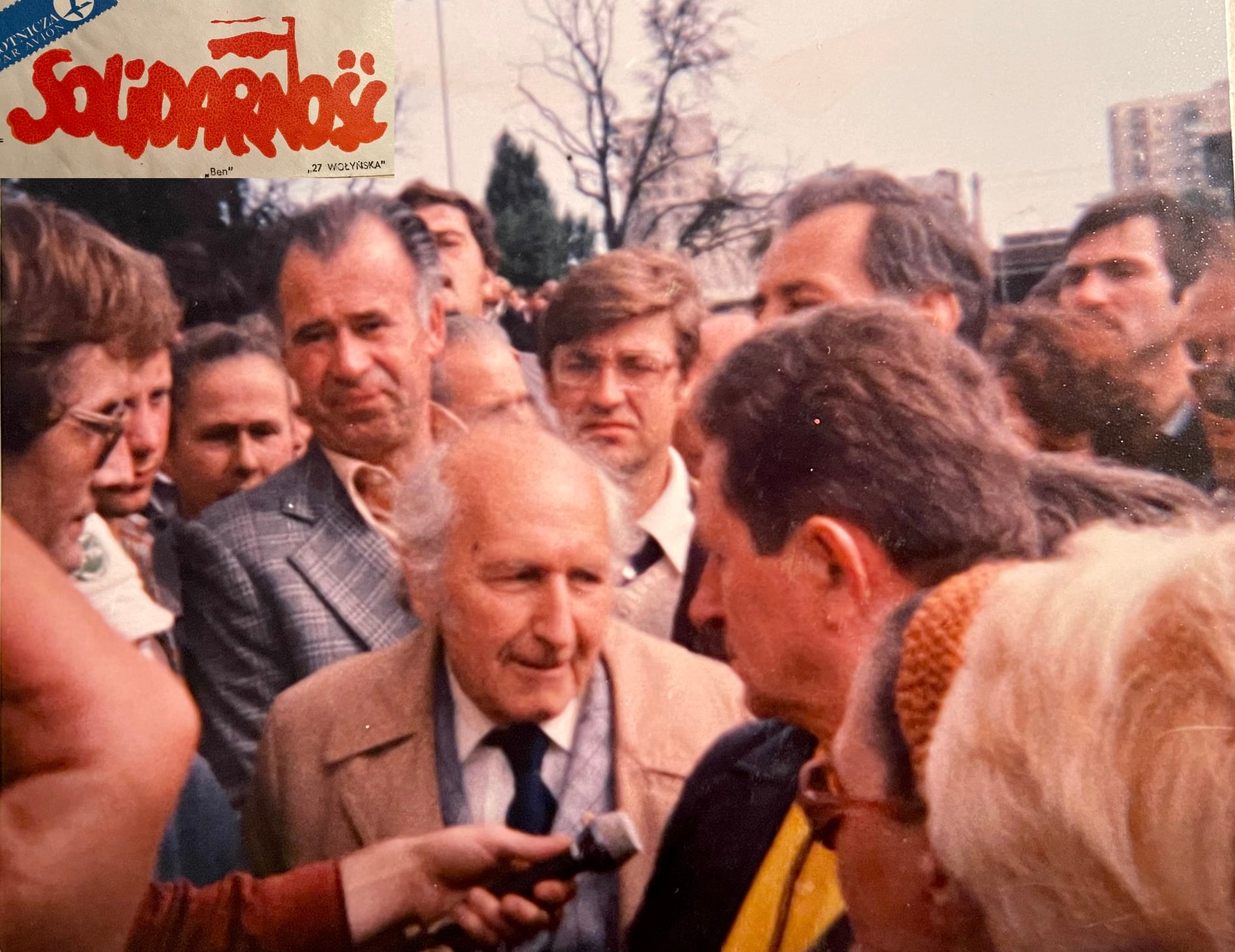APRIL 14, 2022 – South of Gdansk, the train passed within sight of Malbork Castle—the largest in the world. Completed in 1405, according to my guidebook, the structure was built by the Teutonic Order of Knights (think “German Crusaders”). The Poles had laid siege to the castle in 1410 after one of history’s turning points, the (First) Battle of Tannenberg, the largest battle of Medieval Europe. I pondered “1410” juxtaposed to the year of Columbus’s first voyage of discovery. The land of Poland was dripping in a bloody history.
Like Warsaw, Gdansk was a veritable phoenix. Before WW II it had been a “free city” under German control, with the German name, “Danzig.” Bombed to smithereens during the war, the old part of Gdansk was later meticulously reconstructed according to its appearance centuries before.
I spent nearly a week there, whipsawed between historical backdrop and current events. Among my first destinations was the shrine outside the Lenin Shipyard where Lech Wałesa (va-WHEN-sa) had led a group of striking workers that morphed into the Solidarity Movement. Near the entrance to the shipyard was a towering monument of three steel crosses—recently erected in memory of the four workers who’d been killed in an uprising in 1970—adorned with the Solidarity logo and surrounded by flowers and wreaths. A crowd of “Polish pilgrims” circulated around the monument and heaped more fresh flowers onto the base. This sight captured the overlap between religion and politics in Poland—and the threat to the Soviet regime.
The threat was underscored that evening when I attended a film festival featuring dissentious works. The centerpiece was Andrzej Wajda’s famous Man of Iron, a highly publicized film set in Gdansk and incorporating actual newsreel footage of the shipyard strike—and critical of Soviet-style propaganda, bureaucracy, and repression. https://www.youtube.com/watch?v=0wSiURGkspY (with English subtitles) The theater was jammed, and seated beside me was an army officer who laughed just as hard as everyone else at scenes of implicit political satire and sarcasm. I remember thinking that the Russians wouldn’t be laughing at his laughter.
Again, following Włodimierz’s “itinerary” (see 4/10/22 post) I found my way to the modern convention hall where the first annual convention of the Solidarity union was about to get underway. It had all the appearances of an American presidential nominating convention—except, in a Communist country. Delegates, journalists, and others filled the large parking lot surrounding the hall.
By chance I met a well-attired, middle-aged man who was a delegate and organizer, spoke English, and was eager to tell me about what people hoped to accomplish at the convention. Moreover, he told me to “stay close,” because Lech Wałesa was expected to appear at any moment. Minutes later, a Polish Fiat pulled up to where we were standing, and sure enough . . . out stepped the famous leader. Before I could snap a picture with my Instamatic, he was absorbed by the crowd of well-wishers and throng of journalists. The next day, however, I’d get a second chance.
(Remember to subscribe to this blog and receive notifications of new posts by email.)
© 2022 by Eric Nilsson

1 Comment
These accounts are terrific, Eric. How thrilling to be an eyewitness to this unfolding of history — and to to speak actively to those making that history. Thanks for posting these.
Comments are closed.